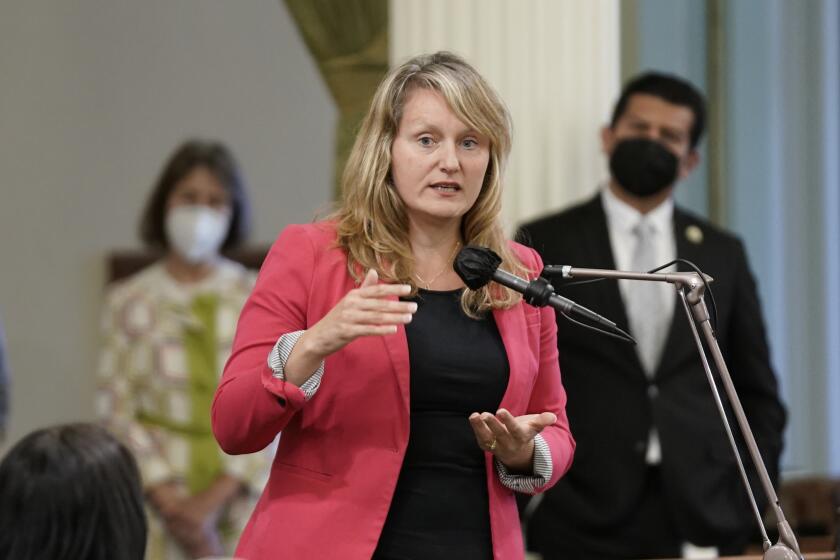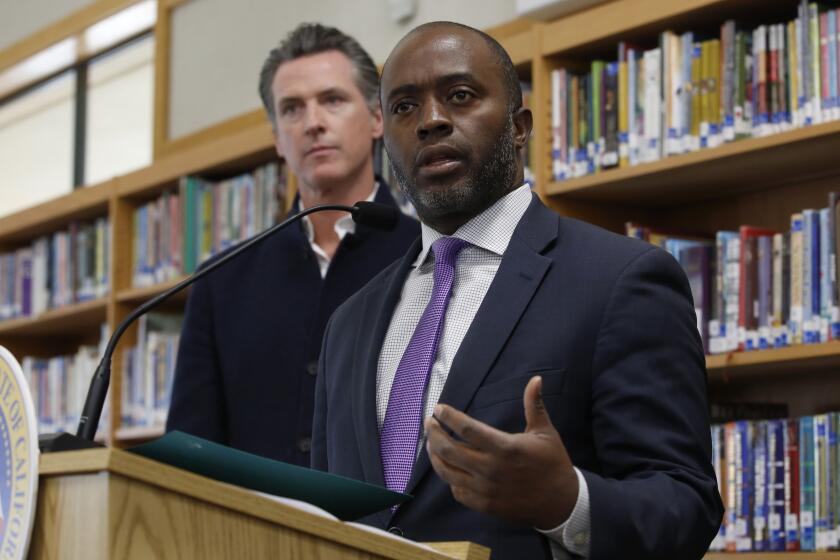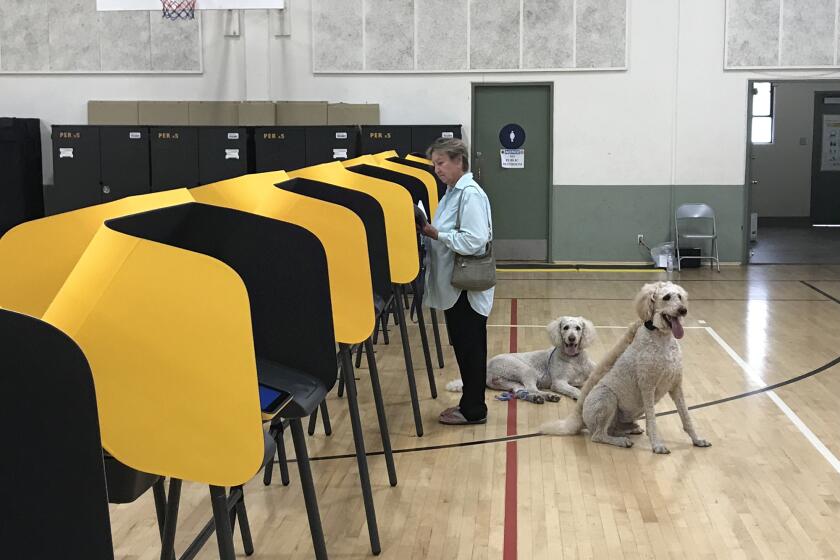Endorsement: Yes on Proposition 28. All kids deserve quality arts and music education
- Share via
California law already requires public schools to offer all K-12 students instruction in visual and performing arts, but in reality many don’t have access to consistent and high-quality arts and music education. When school budgets tighten, programs like music, dance, theater and art are often the first to be cut.
Many children have missed out on that learning because of the short-sighted decisions of state lawmakers and school district officials who send the message that arts and music programs, while nice to have, are not essential. That’s unacceptable in a state that is known throughout the world as an arts and entertainment capital and where creative industries are an important part of the economy.
Voters can take a meaningful step to help millions of California children by voting yes on Proposition 28 on the Nov. 8 ballot, which will guarantee an ongoing source of funding to support arts and music education in all public and charter schools, from preschool to 12th grade.
The need is great. Only about 1 in 5 public schools in California have a full-time arts or music education program, according to the initiative’s proponents. As it is now, the amount of music and arts instruction children receive is largely dependent on the decisions of local school districts. That creates an uneven landscape of racial and economic disparity, where schools in wealthier areas with flusher budgets and robust parent fundraising support extensive music and arts programs while schools in lower-income communities that are largely Black and Latino have less access.
Even a state like California, with its progressive abortion laws, needs the right to abortion enshrined in its state constitution.
The initiative is spearheaded by former Los Angeles Unified Supt. Austin Beutner, who has donated millions of dollars to the campaign. It has also drawn support from Hollywood celebrities and music, arts and entertainment figures including Dr. Dre, Gustavo Dudamel, Barbra Streisand, Issa Rae and John Lithgow, businesses and investors like Fender Musical Instruments and Steve Ballmer, as well as teachers unions. There is no organized opposition.
Rather than raise new taxes, Proposition 28 would set aside a portion of the state’s general fund equal to 1% of the Proposition 98 money, the 1988 ballot initiative that sets minimum funding levels for K-12 schools and community colleges. If approved by voters, Proposition 28 would increase state education spending by an estimated $800 million to $1 billion a year starting in 2023, according to the Legislative Analyst’s Office.
Here’s the downside: Because the money would be drawn from the general fund, and without a new revenue source like a tax or fee, it could eventually come at the expense of other state-funded programs. While that isn’t an issue right now with the state swimming in a gigantic budget surplus, it’s likely to constrain lawmakers as soon as revenues tighten again. This is a real concern, and why we previously opposed this effort.
But voters must act where state and local leaders have failed. Not only is arts education supported by an overwhelming majority of Americans, it is essential for building children’s capacity for creativity and self-expression, critical thinking, empathy and other skills that help them engage with school and civic society. Studies have also linked it to improved attendance, better scores on standardized tests and higher college aspirations.
Tony Thurmond has disappointed on several fronts in leading California’s schools. But his opponent’s positions are not acceptable for this state’s voters.
A broad array of programs would qualify for the funding, including dance, music, theater, painting, sculpture and photography as well as graphic design, computer coding, animation, music composition and script writing.
This initiative would help reduce inequity because it would dole out funds using a formula that concentrates money in low-income schools that need it the most. This is crucial because Black, Latino and low-income students are far less likely than their white and wealthier counterparts to be taught art or music, both in and outside of school, and are most dependent on schools to provide this kind of instruction.
Proposition 28 requires at least 80% of the funds be used to hire arts and music teachers and aides, with the remaining funds paying for training, supplies and materials and for educational partnerships with community and arts organizations. Proponents expect the initiative to provide enough money to bring an additional 15,000 full-time and part-time arts and music teachers and aides into California’s public schools over the next few years, roughly doubling their current numbers.
The measure also requires the funding only be used to increase arts education, and not to supplant money used for such programs now. While there is some risk that administrators will find ways around that restriction, the measure includes strong transparency provisions that require school principals to develop spending plans and districts to publish annual reports that show how they spent the money and detail the arts programs and teaching positions it funded. No more than 1% of the money can go toward administration.
The Times will begin publishing our endorsements this week for ballot measures and major local and statewide races.
Proponents argue that arts education is so important that the ends justify the means. They acknowledge the initiative was structured without a tax increase or other funding mechanism because it has the best chance of passage that way. And they say they took the matter to voters because politicians have failed to provide adequate funding, and because California’s public school children don’t have anyone effectively lobbying on their behalf.
We should be clear that this initiative is a backdoor way to funnel more state money into schools and that its approach is more pragmatic than perfect. But that is not reason enough to vote no and deprive California children of these opportunities.
All kids deserve the quality arts education that California promises but has failed to deliver at many of its public schools. Voters have a measure before them to start living up to those ideals and they should support it.
Read more endorsements at: latimes.com/endorsements
More to Read
A cure for the common opinion
Get thought-provoking perspectives with our weekly newsletter.
You may occasionally receive promotional content from the Los Angeles Times.













